Content
-
Weekly Highlights
- Market Commentary
- Upside & Downside Risks


The chart below is an updated look at the major raw materials we have been watching closely since the Russian invasion into Ukraine, with the front month busheling future (white), pig iron delivered to New Orleans (orange), and Midwest shredded scrap (green).

The last time we looked at the three of these prices was at the end of April, shortly after prices had peaked and started moving lower. Since then, they have continued to fall, but not as fast as HRC prices. As it currently stands, profitability levels at the domestic mills have rapidly shrunk and are below pre-invasion levels. In response, mills have been throttling down production. $800 was clearly the price that mills wanted to support and now that most spot prices are assessed below that level, we should anticipate more severe measures to get back to that level.

Below are the most pertinent upside and downside price risks:
Upside Risks:
Downside Risks:

After pausing last week, the Platts TSI Daily Midwest HRC Index continued its recent trend and was down $20 to $790.

The CME Midwest HRC futures curve is above last Friday’s settlements in orange. The curve printed lower last week, with the front down the most significantly.

The 2nd month ferrous futures ended the week mostly lower led by iron ore, which lost 7.6%, while Aussie coking coal gained 23%.
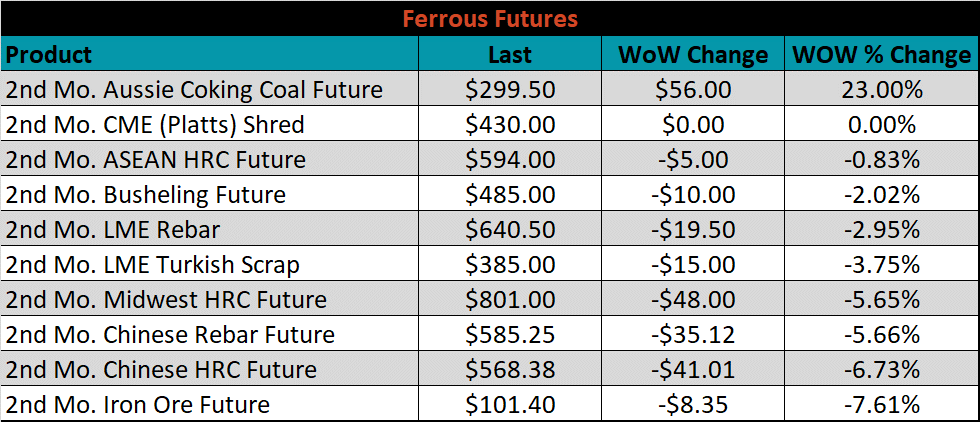
Global flat rolled indexes moved mostly lower again this week, led Midwest tandem products, CRC and HDG were down 3.5%, and 3.3%, respectively.
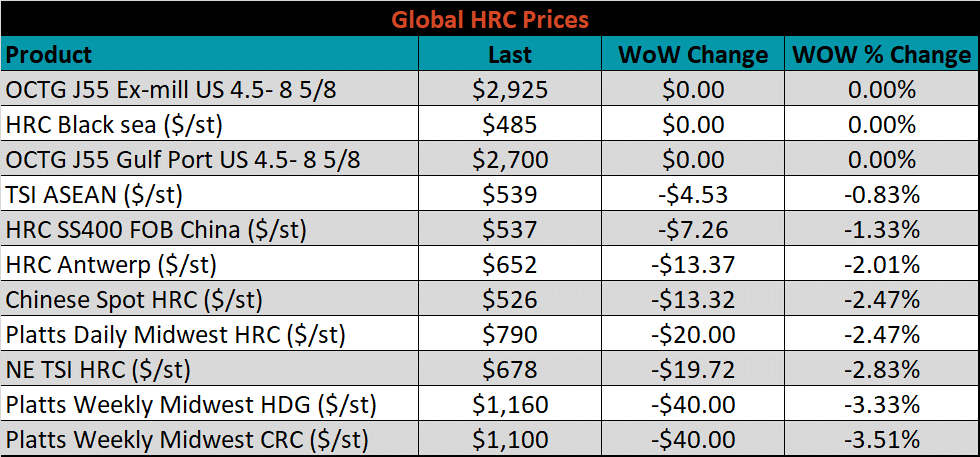
The AISI Capacity Utilization was up 0.8% to 79%.


August flat rolled import license data is forecasting an increase of 157k to 1,028k MoM.

Tube imports license data is forecasting a decrease of 62k to 427k in August.


August AZ/AL import license data is forecasting an increase of 32k to 125k.

Below is August import license data through August 15th, 2022.

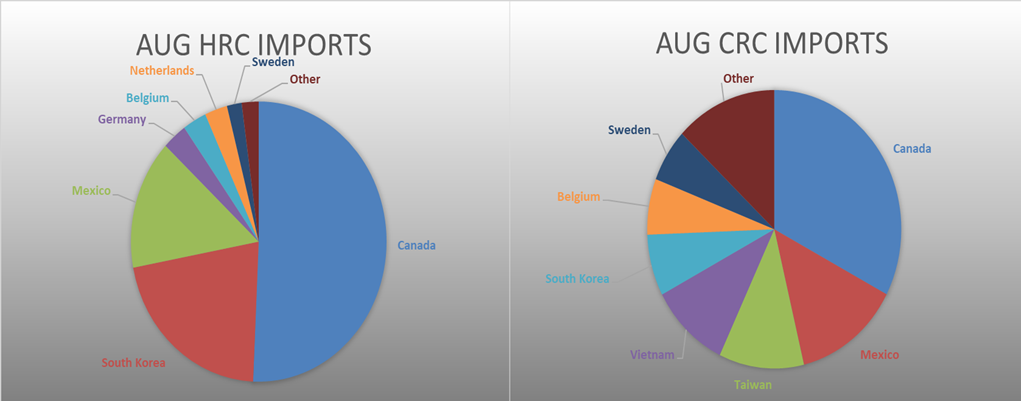

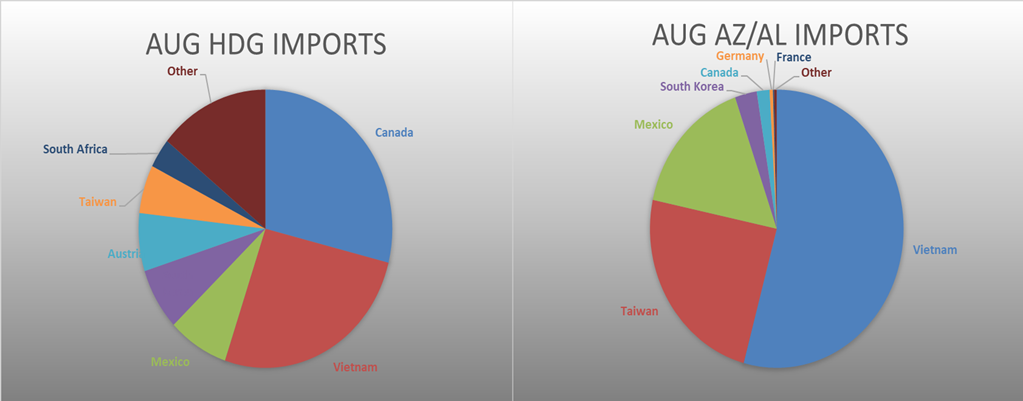
Below is the Midwest HRC price vs. each listed country’s export price using pricing from SBB Platts. We have adjusted each export price to include any tariff or transportation cost to get a comparable delivered price. Differentials all the watched countries differentials were lower last week, as the U.S. Midwest price fell most significantly.
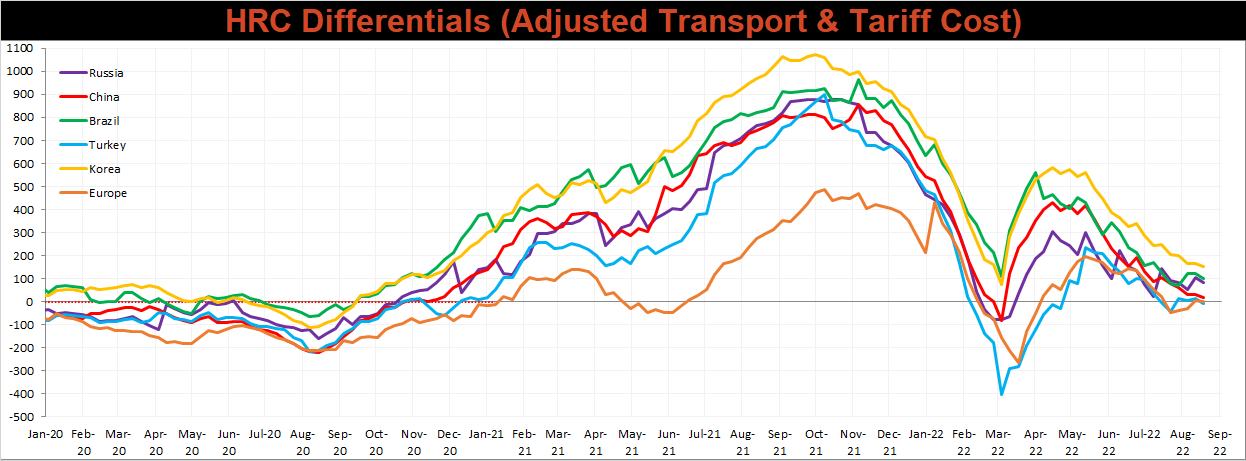
SBB Platt’s HRC, CRC, and HDG pricing is below. The Midwest CRC, HDG, & HRC prices were down 3.5%, 3.3%, and 2.5%, respectively.




Raw material prices were mixed last week, with Aussie coking coal up another 13.6%, while iron ore futures lost another 8.4%.
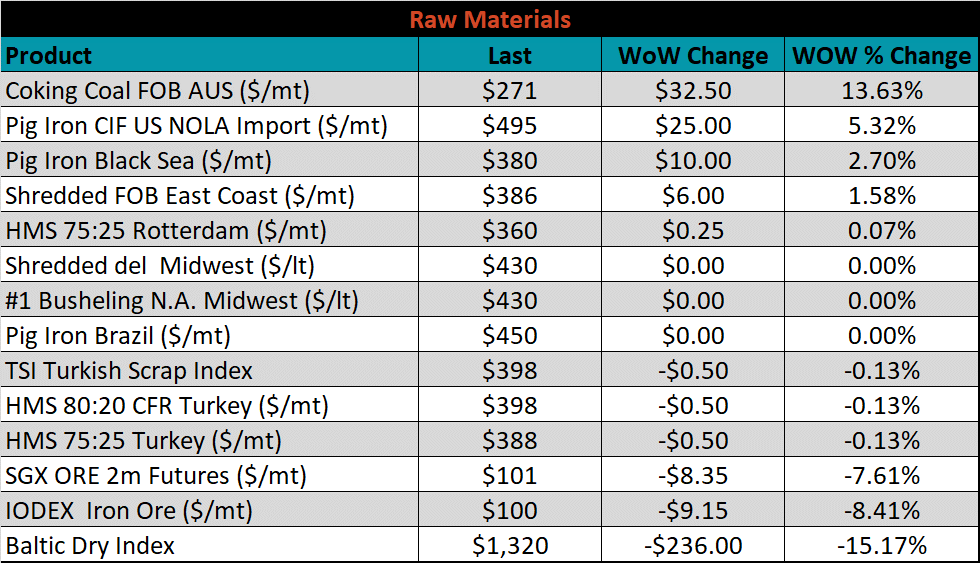
Below is the iron ore future curve with Friday’s settlements in orange, and the prior week’s settlements in green. Last week, the entire curve shifted sharply lower, most significantly in the front.

The ex-flat rolled prices are listed below.






Last week, the September WTI crude oil future lost $1.32 or 1.4% to $90.77/bbl. The aggregate inventory level decreased 1.3%. The Baker Hughes North American, and U.S. rig count both decreased by 1 rig.
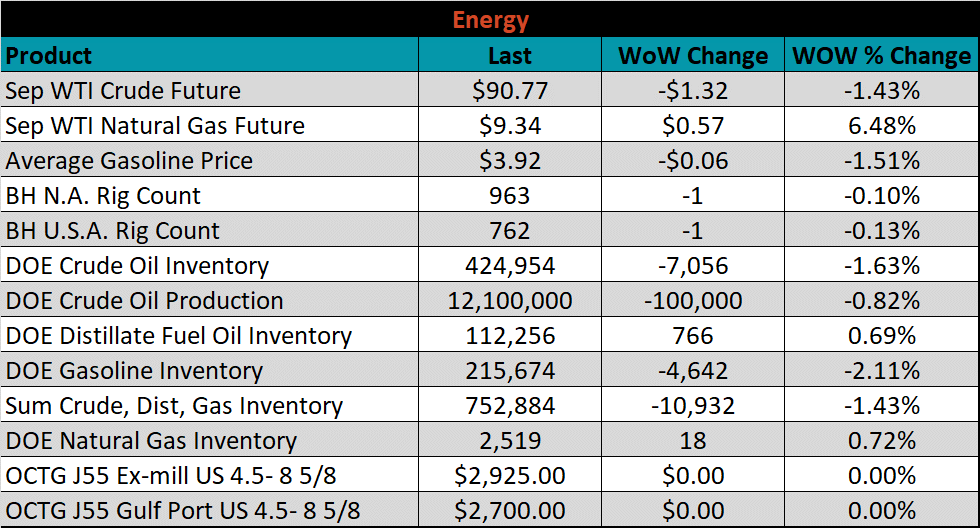





The list below details some upside and downside risks relevant to the steel industry. The bolded ones are occurring or highly likely.
Upside Risks:
Downside Risks: